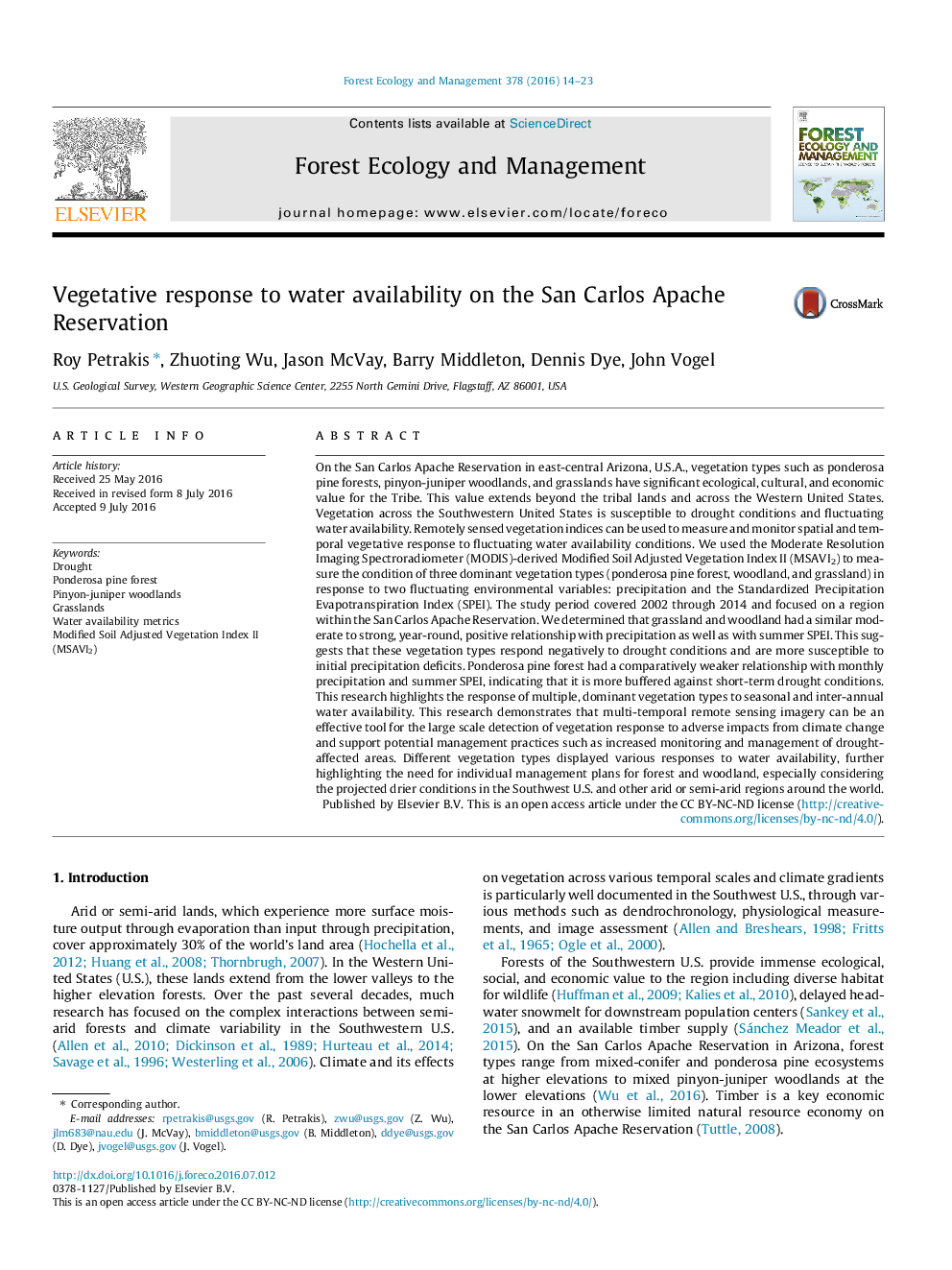| کد مقاله | کد نشریه | سال انتشار | مقاله انگلیسی | نسخه تمام متن |
|---|---|---|---|---|
| 6542016 | 159144 | 2016 | 10 صفحه PDF | دانلود رایگان |
عنوان انگلیسی مقاله ISI
Vegetative response to water availability on the San Carlos Apache Reservation
ترجمه فارسی عنوان
پاسخ گیاهی برای دسترسی به آب در رزرو سان کارلوس آپاچی
دانلود مقاله + سفارش ترجمه
دانلود مقاله ISI انگلیسی
رایگان برای ایرانیان
موضوعات مرتبط
علوم زیستی و بیوفناوری
علوم کشاورزی و بیولوژیک
بوم شناسی، تکامل، رفتار و سامانه شناسی
چکیده انگلیسی
On the San Carlos Apache Reservation in east-central Arizona, U.S.A., vegetation types such as ponderosa pine forests, pinyon-juniper woodlands, and grasslands have significant ecological, cultural, and economic value for the Tribe. This value extends beyond the tribal lands and across the Western United States. Vegetation across the Southwestern United States is susceptible to drought conditions and fluctuating water availability. Remotely sensed vegetation indices can be used to measure and monitor spatial and temporal vegetative response to fluctuating water availability conditions. We used the Moderate Resolution Imaging Spectroradiometer (MODIS)-derived Modified Soil Adjusted Vegetation Index II (MSAVI2) to measure the condition of three dominant vegetation types (ponderosa pine forest, woodland, and grassland) in response to two fluctuating environmental variables: precipitation and the Standardized Precipitation Evapotranspiration Index (SPEI). The study period covered 2002 through 2014 and focused on a region within the San Carlos Apache Reservation. We determined that grassland and woodland had a similar moderate to strong, year-round, positive relationship with precipitation as well as with summer SPEI. This suggests that these vegetation types respond negatively to drought conditions and are more susceptible to initial precipitation deficits. Ponderosa pine forest had a comparatively weaker relationship with monthly precipitation and summer SPEI, indicating that it is more buffered against short-term drought conditions. This research highlights the response of multiple, dominant vegetation types to seasonal and inter-annual water availability. This research demonstrates that multi-temporal remote sensing imagery can be an effective tool for the large scale detection of vegetation response to adverse impacts from climate change and support potential management practices such as increased monitoring and management of drought-affected areas. Different vegetation types displayed various responses to water availability, further highlighting the need for individual management plans for forest and woodland, especially considering the projected drier conditions in the Southwest U.S. and other arid or semi-arid regions around the world.
ناشر
Database: Elsevier - ScienceDirect (ساینس دایرکت)
Journal: Forest Ecology and Management - Volume 378, 15 October 2016, Pages 14-23
Journal: Forest Ecology and Management - Volume 378, 15 October 2016, Pages 14-23
نویسندگان
Roy Petrakis, Zhuoting Wu, Jason McVay, Barry Middleton, Dennis Dye, John Vogel,
